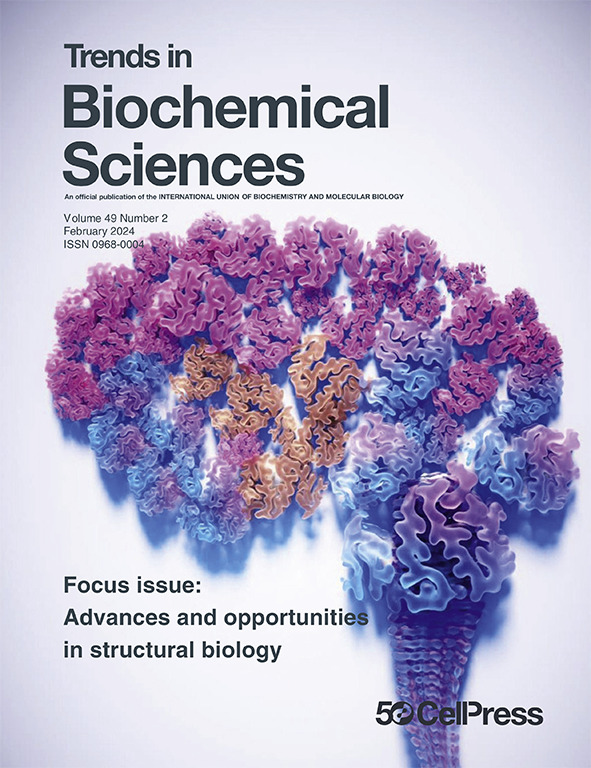探索蛋白质相互作用的非降解分子胶。
IF 11
1区 生物学
Q1 BIOCHEMISTRY & MOLECULAR BIOLOGY
引用次数: 0
摘要
蛋白-蛋白相互作用(PPIs)是细胞信号传导的核心,是具有吸引力但具有挑战性的药物靶点。虽然分子胶降解剂(MGDs)通过E3连接酶募集促进靶标降解,但非降解分子胶(mggs)独立于泛素化作用来稳定PPIs,从而调节复合物的组装、定位和信号传导。在这篇综述中,我们概述了非降解mg的最新进展,重点介绍了关键的呈现蛋白,如FKBP12、亲环蛋白A和14-3-3,以及这些典型系统之外的新兴案例研究。化学生物学、结构分析和计算设计的进步正在加速这一新兴领域的发现。总的来说,这些见解将非降解mg定位为具有独特机制和广泛转化潜力的有前途的治疗方式。本文章由计算机程序翻译,如有差异,请以英文原文为准。
Exploring nondegrading molecular glues for protein–protein interactions
Protein–protein interactions (PPIs) are central to cellular signaling and represent attractive, yet challenging drug targets. While molecular glue degraders (MGDs) promote target degradation via E3 ligase recruitment, nondegrading molecular glues (MGs) act independently of ubiquitination to stabilize PPIs, enabling modulation of complex assembly, localization, and signaling. In this review, we outline recent progress in nondegrading MGs, highlighting key presenter proteins, such as FKBP12, Cyclophilin A, and 14-3-3, along with emerging case studies beyond these canonical systems. Advances in chemical biology, structural analysis, and computational design are accelerating discovery in this emerging field. Collectively, these insights position nondegrading MGs as a promising therapeutic modality with distinct mechanisms and broad translational potential.
求助全文
通过发布文献求助,成功后即可免费获取论文全文。
去求助
来源期刊

Trends in Biochemical Sciences
生物-生化与分子生物学
CiteScore
22.90
自引率
0.70%
发文量
148
审稿时长
6-12 weeks
期刊介绍:
For over 40 years, Trends in Biochemical Sciences (TIBS) has been a leading publication keeping readers informed about recent advances in all areas of biochemistry and molecular biology. Through monthly, peer-reviewed issues, TIBS covers a wide range of topics, from traditional subjects like protein structure and function to emerging areas in signaling and metabolism. Articles are curated by the Editor and authored by top researchers in their fields, with a focus on moving beyond simple literature summaries to providing novel insights and perspectives. Each issue primarily features concise and timely Reviews and Opinions, supplemented by shorter articles including Spotlights, Forums, and Technology of the Month, as well as impactful pieces like Science & Society and Scientific Life articles.
 求助内容:
求助内容: 应助结果提醒方式:
应助结果提醒方式:


